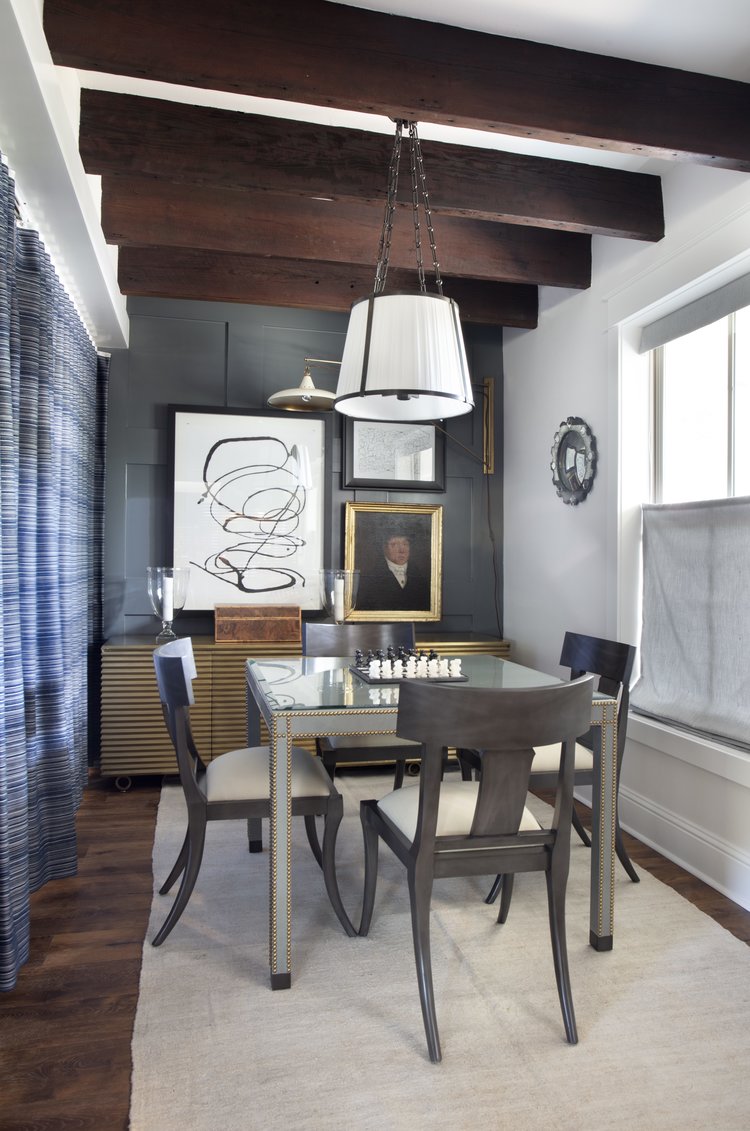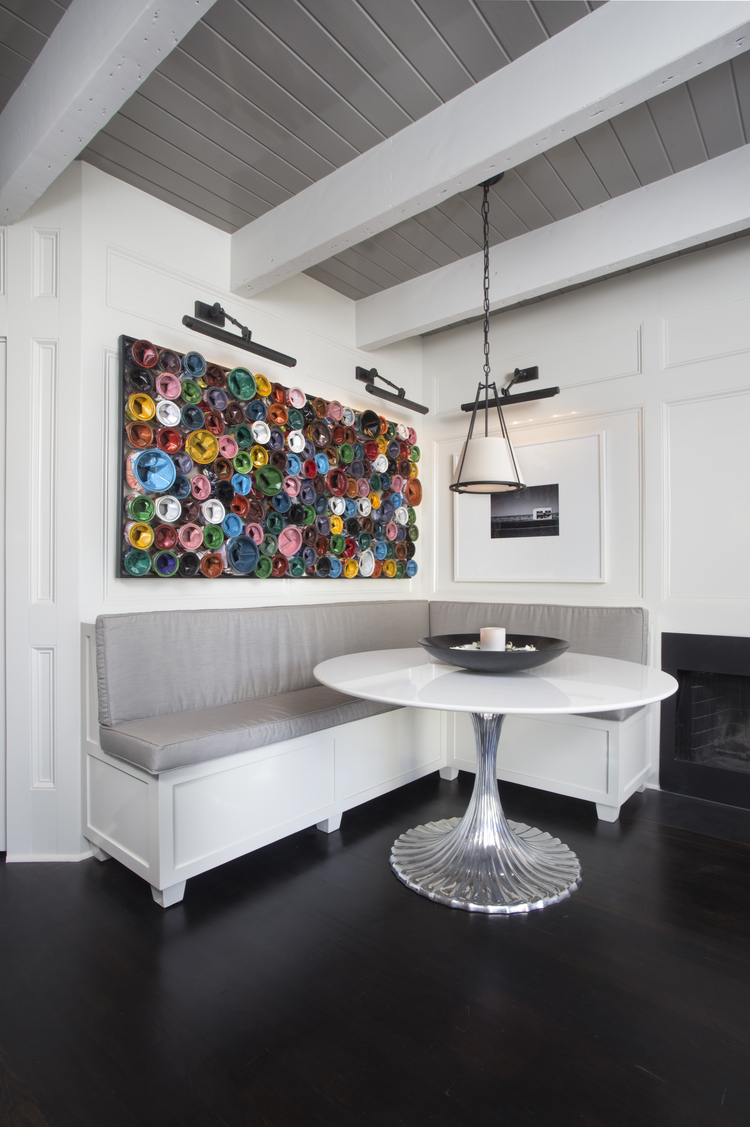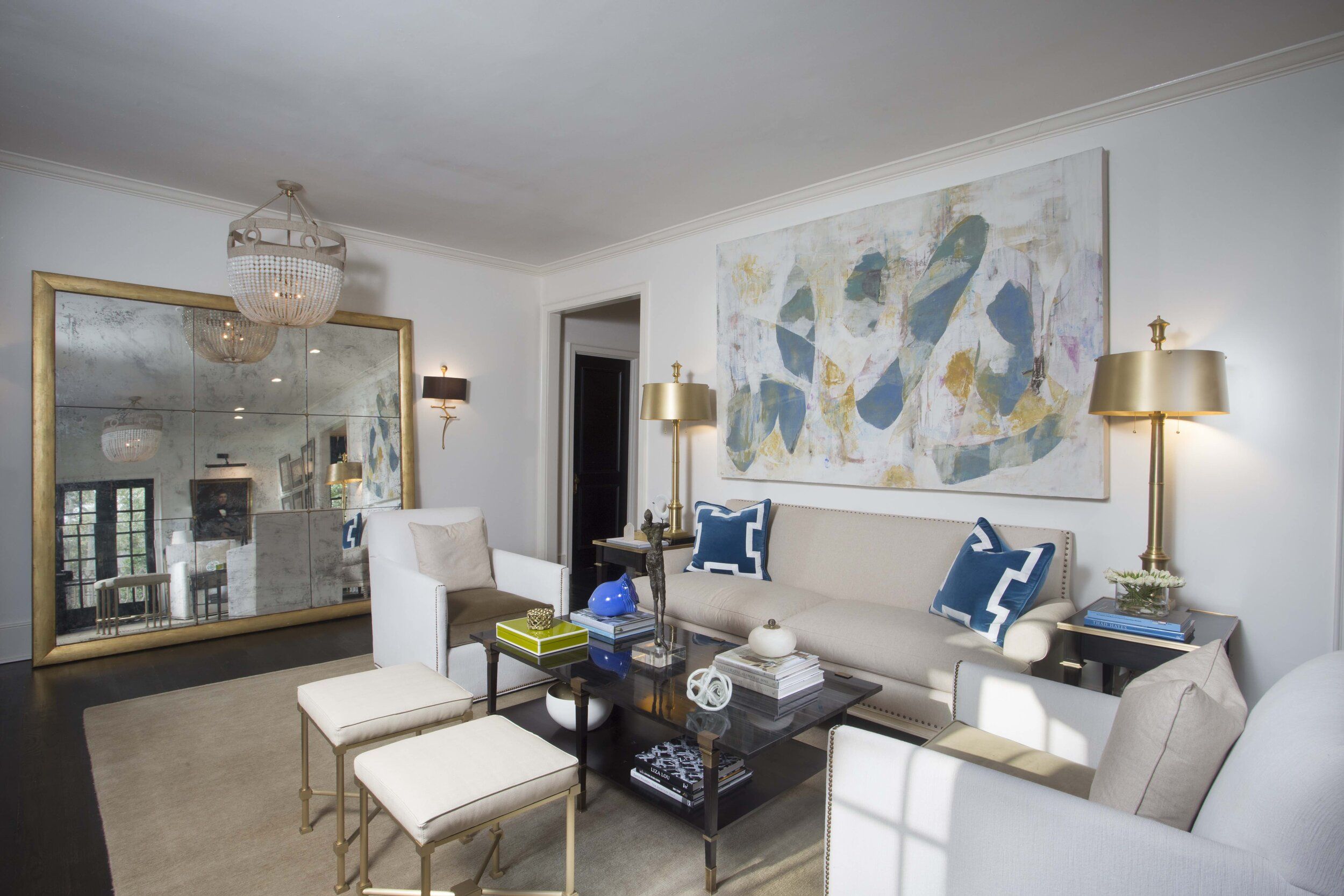Designer tip: Displaying artwork in the home with Ty Larkins Interiors
The process of obtaining and displaying artwork in the home might be described as a humbling experience to say the least. From the poorly framed poster of the beloved boy band haphazardly hung on our wall with Scotch tape to the collage of photographs from our early twenties when we dabbled in photography, the act of acquiring and showcasing artwork continues to be a learning experience for all of us as we strive to exhibit our admiration for the arts through the design of our home.
“Artwork is so important because it really gives the house a completed look,” explains Rachel Todd of Ty Larkins Interiors. “And just completes the overall design.”
 When it comes to home design, furniture usually comes to mind first. However, Todd stresses that artwork is of equal importance in a space.
When it comes to home design, furniture usually comes to mind first. However, Todd stresses that artwork is of equal importance in a space.
“While it might seem like art is a final detail to the space,” says Todd, “without incorporating it and making it a priority of the room, the space can completely fall flat and look unfinished. It might seem like a small detail but it’s everything in a space. It’s really what completes everything.”
But it’s not about matching. Rather, about creating a collection that works well together, whether it includes inherited pieces or works picked up at boutiques around town.
“One tip I would say for selecting art in your house, or specifically a room itself, is the mixture of different media,” suggests Todd. “So using a painting on canvas, and then also in the same room, using black and white photography. You could use prints that are framed, or intaglios, or objects that have been framed, or mirrors or even decorative lighting fixtures like sconces that are mixed into a composition. I think even light fixtures can be considered art.”
Once you’ve chosen your statement pieces, though, it can be difficult to decide where to place them so that they get the attention they deserve.
“A good way to start with that is walking into a room and asking yourself where your sight line is,” says Todd. “So if you walk into a room and you have a wall with a sofa in front of it and that’s the first thing you see, then that’s the wall you start with because that’s what is going to draw you in.”
By planning out art placement in this way, it’s easy to give different works the space they deserve. However, as a collection grows, wall space often becomes scarce. Todd advises resisting the temptation to overcrowd, even if it’s with pieces you love.
Art galleries don’t fill every corner with works by various artists. Rather, large areas of blank wall space allow each individual piece to shine. According to Todd, your home is no different.

“It’s important to leave negative space,” says Todd. “You don’t want every single wall full of art or too many pieces on one wall. Leaving room around certain pieces really elevates them and makes that art special.”
And that’s what’s most important: putting on display that which speaks to the homeowners and their unique style. For Todd, that means anything can be art. She likes to put special emphasis on the unexpected in order to add a personal touch to a space.
“What we love to do with art sometimes is something totally unexpected,” she explains. “For example, seeing something your kid maybe scribbled down on a piece of paper with lots of color. Naturally, you put it on the fridge and take it down. Maybe you can see it from a different perspective and put a frame around it and use it in a larger composition. Sometimes kids make the best artists because they’re totally free and without constrictions.”
This story originally appeared in a November 2020 edition of inRegister@HOME.












